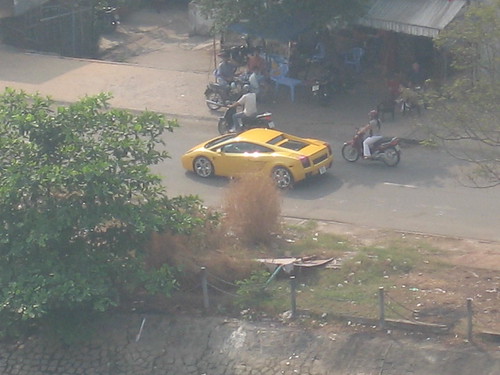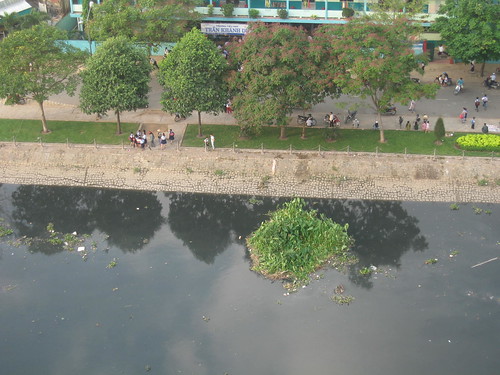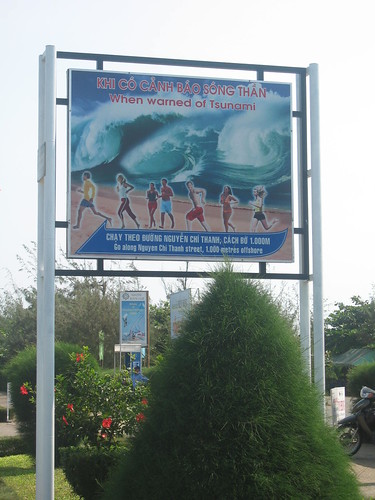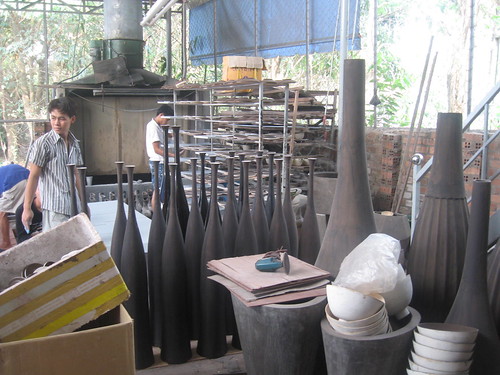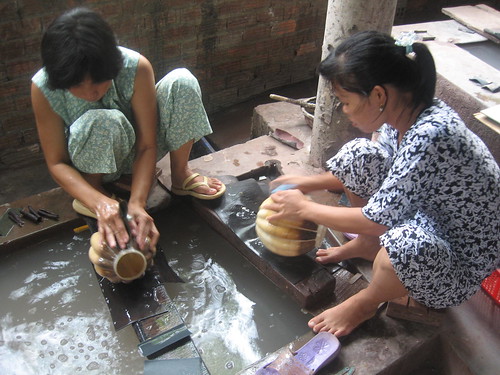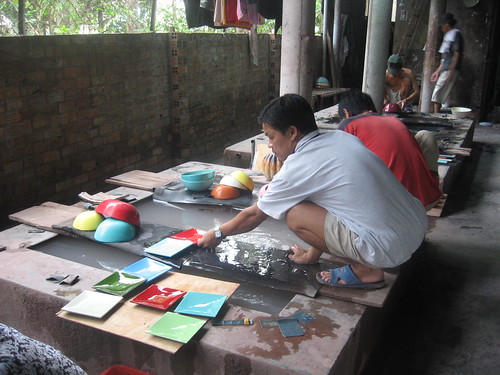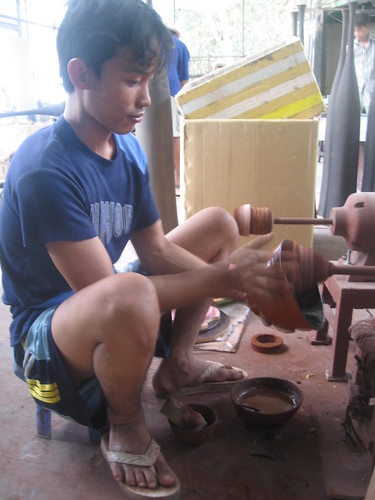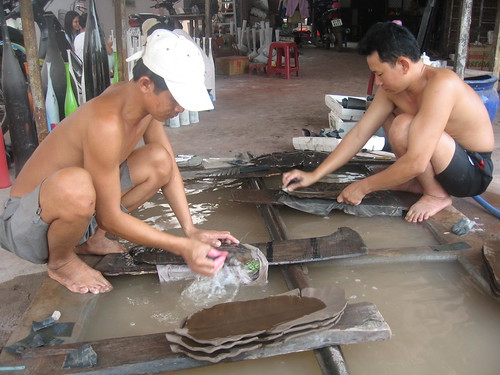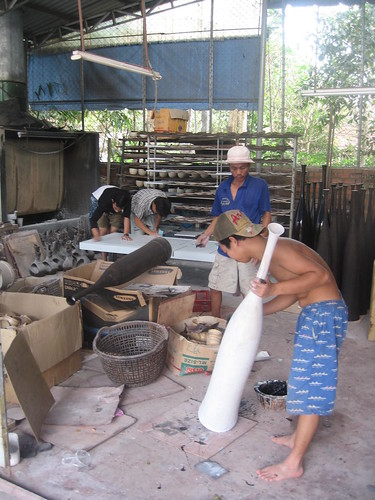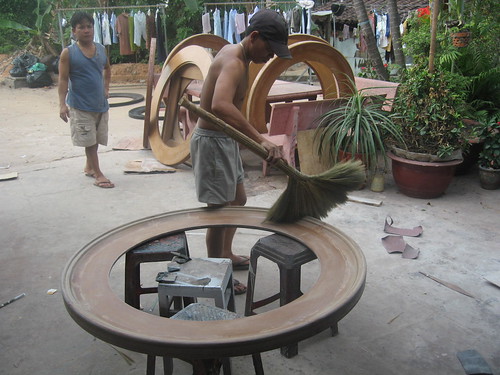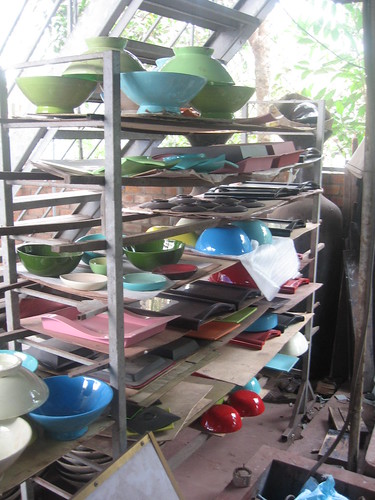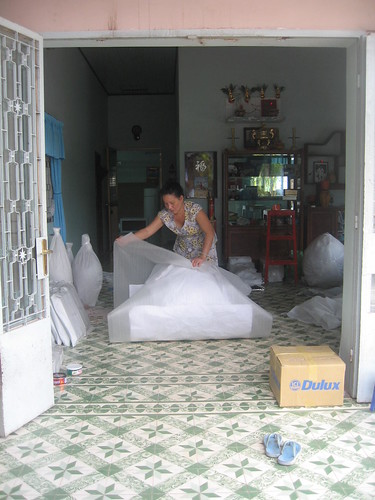Neil Fitzgerald's solutions are as follows:
1) Public Transport.
Of course we will have the 'subway' of which only 3km will actually be underground. We have a number of lines built by various contractors : Japanese, Chinese, German. The Japanese line has 'broken ground' according to a friend of mine. The line however faces problems already. It has to run through an area bordering D1 owned by the military - they have told the contractors they will 'let them know in 2 years'.
Conclusion : Large part of the solution to some of the city's problems but will take too long to complete. Could open up the city to other options (discussed later).
2) Carpool
Korean executives and wealthy Vietnamese parade around in their cars one up plus driver, this is not going to change.
Conclusion: No way this is a solution.
3) Box Junctions
Yellow criss-cross grids in the road which are meant to show areas always to be kept free. The frequent occasions I have witnessed a bus, taxi or other driver exhibit about as much intellect as a wet vegetable by joining a cue directly in the center of a crossroads lead me to believe that road markings, no matter how threateningly they are painted, are useless. Box junctions are however in this sense indicative of Saigon's traffic problems.
My general feeling is that the traffic, no matter how busy, usually moves. However, along each tree-lined boulevard is a tightrope walking left turn across the other lane with no system of give way, a thin layer of ice about to be shattered by an impatient bus driver who presses into the wrong lane. The ebb and flow of the nimble two wheeled traffic is on a knife edge. Gridlock does occur, but usually due to someone else's stupidity.
Conclusion: Again, observation of newly painted box junctions is optimistic, and a drop in the ocean.
4) Widening streets
Many streets have the capacity to be widened, especially ones like the nightmarish Dien Bien Phu, also Vo Thi Sau.
Conclusion : Would help in some places.
Real Solutions - Short Term
------------------------------------
1) More traffic police.
Traffic police enable busy junctions to flow. We need many more such workers to police these junctions, at some places almost permanently.
2) Education
Educational campaigns to increase the observation of traffic laws. Education about using roads - i.e., cyclists staying to the right side of the road. It may seem like a minor point, but actually, the sight of three abreast high school children merrily sailing down the center of a street during rush hour painfully adds to the congestion. Slow moving traffic should be persuaded to stay on the inside.
3) Traffic Signals
More complex signals need to be introduced at certain points. For example, NTMK and CMTT allow both oncoming and left turning traffic. The resultant delay from left turning traffic blocking the oncoming traffic from the other direction means that only a small percentage of vehicles are able to get through. A signal allowing one direction at a time would allow a much greater flow of traffic although mean longer waits.
Roundabouts need the addition of traffic lights, most are horribly susceptible.
4) Road systems
Some current road systems are the main reason for rush hour queues, a ludicrous left turn with no signal or a small alley that allows people to cut across an insanely busy street. Certain routes need to be out of bounds during rush hours. My favourite is just after the Dien Tien Hoang - Dien Bien Phu junction, heading towards Vo Thi Sau. Here we have a series of disruptive systems that cause havoc with the flow of traffic.
Real Solutions - Long Term
------------------------------
Ho Chi Minh City is a massive urban area. The city is a never ending sea of junctions and traffic lights. Interwoven in this urban fabric are schools, government offices, businesses and residential areas. So much of the city's economic infrastructure is based in the five or so central districts, thousands of people commuting from surrounding provinces. Come five o clock when businesses are closing let's say you have to get from D5 or D10 to Binh Thanh, Phu Nhuan or Go Vap, all huge residential areas. Your options are reduced to one or two relatively narrow streets : Nguyen Thi Minh Khai, Dien Bien Phu, 2/3....all horribly jammed in rush hour. Studies need to be done (if they haven't already) about where the traffic is coming from and assess the daily patterns of movement between districts and around the city. This can help better understand the strain currently felt on the existing road network.
With regard to residential areas, problems are faced by the uniqueness of areas in Ho Chi Minh. Hidden behind the boulevards and intersections are a labyrinth of alleyways and gated communities, each with their own economy of cafes, street sellers, food vendors, private tutors, refuse collectors and way of living. It is common for young Vietnamese to know this environment as the entire world, barely leaving the alley until they reach their late teens. Urban Saigonese have been living this way for generations, however it is essential that they are open to adapting new ways of life in order to cure the cities problems and make it increasingly livable for everybody.
Look to Singapore or Seoul, Tokyo or KL. All massive urban areas, mostly developed relatively recently. Especially in Singapore and Seoul, the solution has been housing projects on a massive scale, all linked to the main business districts of the city center by efficient transport. We have to recognise that HCMC is no longer the small city that some perceive it to be, rather that it will in the future be a massive area of people as its boundaries continue to expand in all directions. According to Wikipedia, HCMC's urban area is the 28th largest in the world, just one place below Bangkok, two below London, and two-thirds the size of Beijing -- it is bigger than the areas in Hong Kong, Taipei, Tehran and Dhaka, not to mention European cities such as Madrid and Milan.
The current developments we see are sporadic apartment blocks going up still inside the city. This is a drop in the ocean compared to what is needed. Train lines running from the city center to outlying areas such as Suoi Tien and Go Vap put in place the infrastructure for large scale mid-range housing projects. Given the choice, I feel most Vietnamese would prefer a couple of short train journeys, say one hour in length, compared to one hour of wrestle and sweat on a motorbike on the cities streets.
It is OK to say that the apartment blocks in Seoul and Singapore are ugly and lack character, but they are ruthlessly efficient in keeping bulging populations in check. Just a small corner of Seoul, but look at the housing available....in 3D, apartments.

These developments may take some convincing for Saigon city residents to make the move but they would soon discover the benefits of out of town developments. More space. Cleaner air. Infrastructure naturally follows such as businesses, shops, cafes. Cheaper rent away from the city (for residents and businesses). All linked to the cities metro system with close convenient stations. Distance and journey times are skewered in Vietnam because of the congestion but with good transport links the actual distances are very short.
To go a step further, the future may be in developing 'satellite' cities, such as in Korea. These are whole urban areas that are modern, well planned, have plentiful housing and attract people -- creating an alternative to what is now available. I visited my friend in Illsan, Korea, one such city. Linked to the main hub by train and newly built highways, these new cities could be the future of the entire Mekong Delta region - the question is, could the population adapt.

